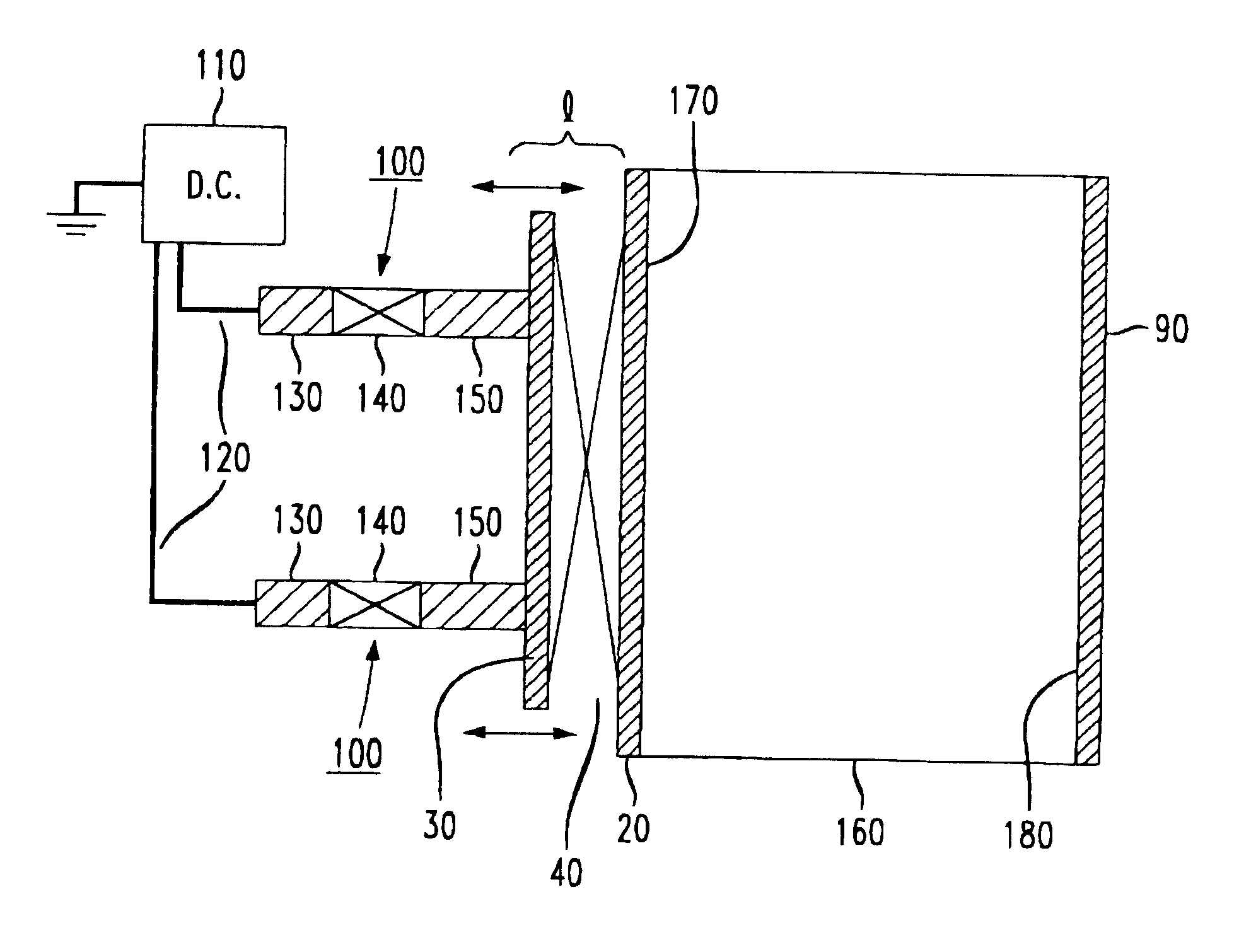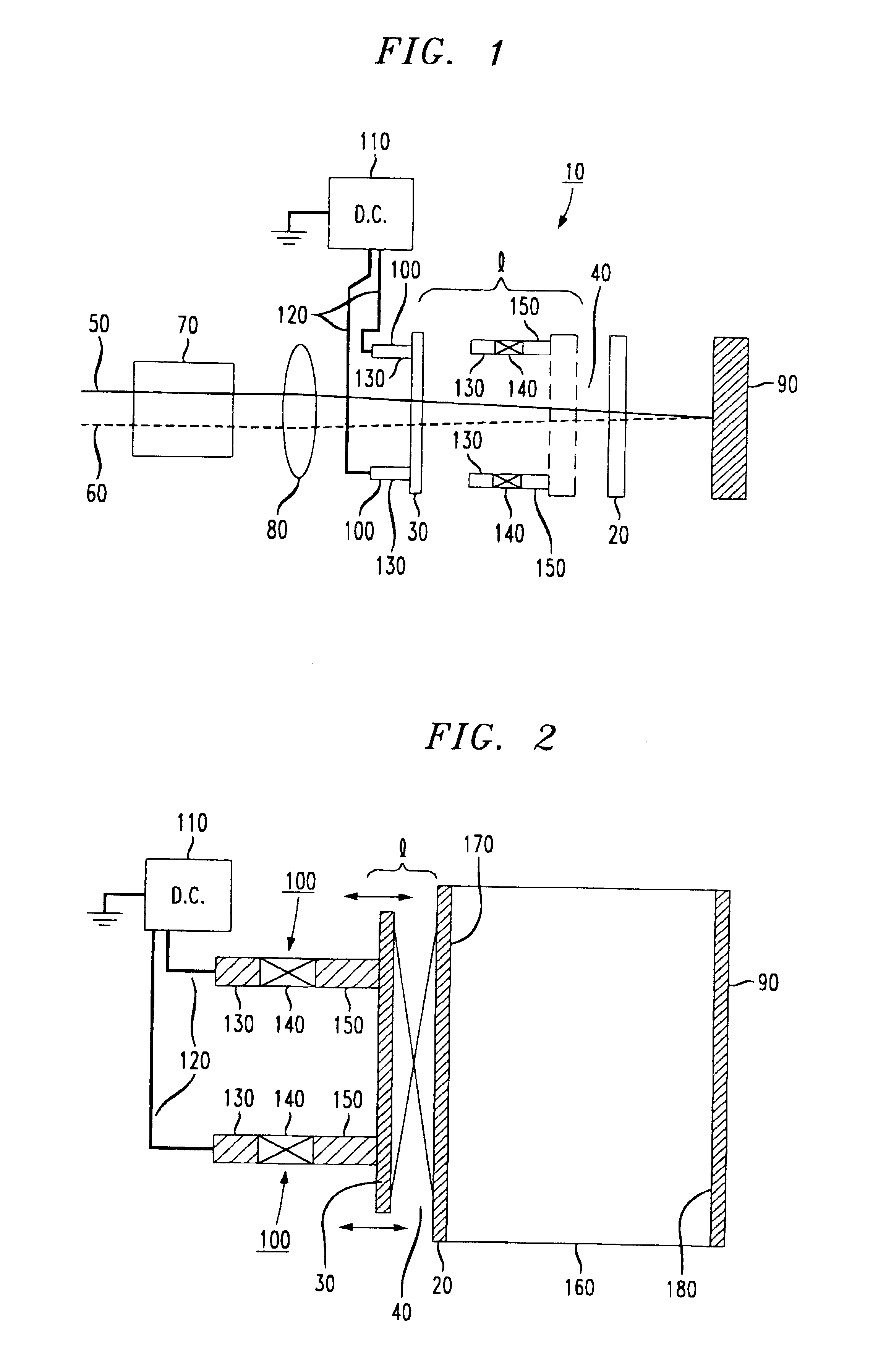Single lens turnable wavelength division multiplexing fabry-perot filter using MEMS technology
a technology of fabry-perot filters and single lenses, applied in the field of single lens turnable wavelength division multiplexing fabry-perot filters, can solve the problems of voas not being able to adapt to tuning signals, affecting the performance of the optical system in which they are found, and fabry-perot interferometers not making their way into modern, long-haul fiberoptic communication systems
- Summary
- Abstract
- Description
- Claims
- Application Information
AI Technical Summary
Benefits of technology
Problems solved by technology
Method used
Image
Examples
Embodiment Construction
Referring now to the drawings, by way of illustrative example a Fabry-Perot filter of the present invention is depicted in FIG. 1 and identified by the general reference numeral 10. Fabry-Perot filters are well-known in the optoelectronics art and, indeed, were invented over eighty years ago in conjunction with the study of optics and light physics especially as these fields developed interferometers and interferometric techniques. Hence, the general optical theory of Fabry-Perot interferometers is well understood. A theoretical treatment of Fabry-Perot interferometers and theory is set forth in Yariv, "Optical Electronics" (2.sup.nd Edition) pp. 62-65, the teachings of which are expressly incorporated herein by reference.
Fabry-Perot filter 10 includes a first mirror 20 that is positionally fixed. A second mirror 30 that is movable and substantially optically aligned with first mirror 20 forms, with first mirror 20, a cavity or etalon 40 having a length 1. The length 1 is varied in ...
PUM
| Property | Measurement | Unit |
|---|---|---|
| voltages | aaaaa | aaaaa |
| voltages | aaaaa | aaaaa |
| wavelengths | aaaaa | aaaaa |
Abstract
Description
Claims
Application Information
 Login to View More
Login to View More - R&D
- Intellectual Property
- Life Sciences
- Materials
- Tech Scout
- Unparalleled Data Quality
- Higher Quality Content
- 60% Fewer Hallucinations
Browse by: Latest US Patents, China's latest patents, Technical Efficacy Thesaurus, Application Domain, Technology Topic, Popular Technical Reports.
© 2025 PatSnap. All rights reserved.Legal|Privacy policy|Modern Slavery Act Transparency Statement|Sitemap|About US| Contact US: help@patsnap.com


